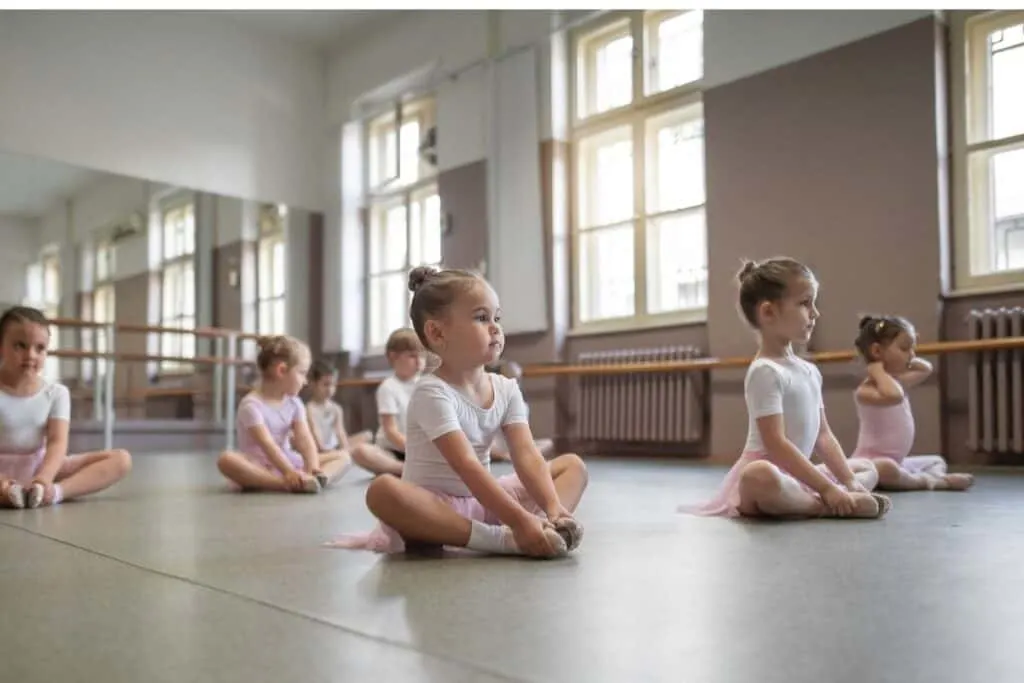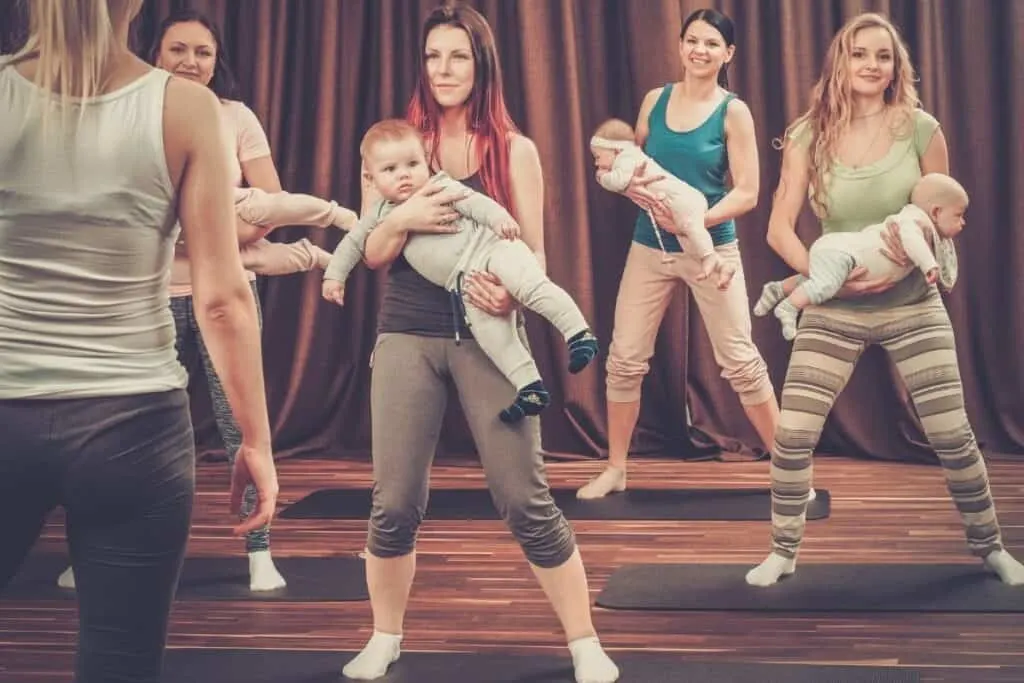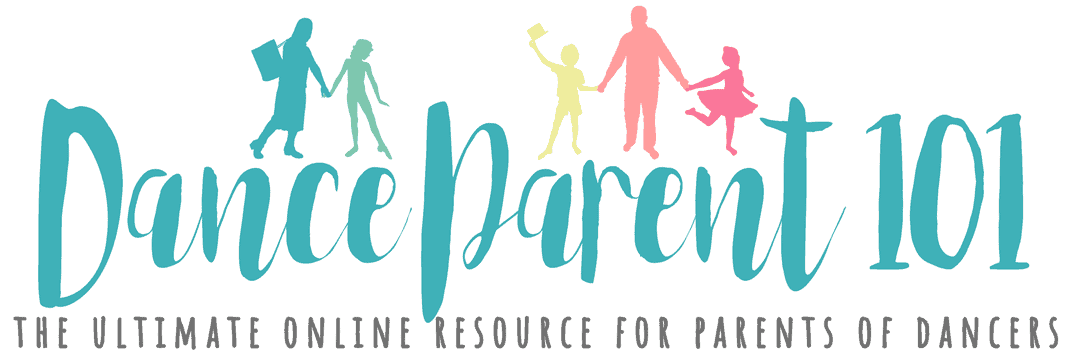Dance classes are opportunities for fun, friends, and exercise, but the benefits of studying dance go much further. Dance, as an art form, comes with the benefits of studying art as well as the benefits of participating in athletics. For parents looking for the benefits of a happy and healthy child, dance is one activity worth considering!
Dance lessons and classes benefit children of all ages by developing problem-solving skills, mental flexibility, creativity, physical dexterity, coordination, skills in teamwork, collaboration, and self-confidence. Parents who sign their child up for dance classes can know that the lessons of dance class will benefit their dancer way beyond the studio.

As I was preparing this article, Deborah Damast, a professor of mine at NYU was teaching at the 92nd Street Y’s Dance Education Laboratory (DEL) and asked her approximately 40 adult students (all dancers/teachers of some kind) to answer the prompt, “What are the benefits of dance in early childhood education.” Check out their responses here:

Parents need to understand that dance teaches discipline and dedication, it helps to increase their child’s self-esteem, how to work with others in a team, and provides them with a creative outlet for stress relief. There are so many benefits of dance for kids – but most important to remember is that dance is fun and can become a lifelong hobby, profession, and passion! Read on for more details and research about the ways dance classes benefit your child’s body, mind, and spirit.
Why is dance beneficial for kids?
1. Dance Provides Opportunity for Exercise
Dance is great exercise, no matter what style you choose. Kids have a lot of energy and need to move their bodies! While unstructured, active free play is essential for all children, the structure of dance class is another great way of being active, especially in our increasingly sedentary world. The physical benefits of dance include balance, coordination, cardiovascular stamina, and flexibility.
2. It Helps Connect the Mind with the Body
To dance well, the body needs oxygen. Coordinating breathing for dancing helps students to connect to their breath, which is ultimately a great tool for managing emotions. At the same time, studying dance helps people to develop an understanding of their body and how it works.
3. Dance Develops Spatial Awareness and Awareness of Others
Whether in a creative dance class or a class that is more technically inclined, a major goal of a dance class is to not bump into other people. This requires a keen sense of spatial awareness that gets developed through regular practice. When I lived in New York City and rode the crowded subway, I often mused that the experience would be much better if more people had dance education and could manage their space. Additionally, when children work collaboratively to choreograph, they develop their capacity to compromise and consider the opinions and ideas of others.
4. It Sets in Motion the Habits Required to Build Consistency and Discipline.
Building skills in dance takes time and consistent practice. While anyone can have an empowering and uplifting dance experience, proficiency in technique requires discipline on the students’ part. This level of discipline definitely transfers to other aspects of a student’s life. At the same time, the product of the discipline is also the confidence that is built when a child masters new skills.

How dance helps Child Development
A quality early childhood dance class spends a lot of time devoted to the building of community. The bonds that are formed between the students and the teacher are strong, and those relationships help children develop into good citizens. However, dancing can also offer children the opportunity to strengthen their brains!
Anne Green Gilbert, a Seattle-based dance education luminary, developed a sequence that she calls the BrainDance. It is based on the movements that babies perform naturally in their first year of life.
A typically developing infant, when given adequate time on the floor to move freely, will go through predictable patterns of movement. These patterns integrate the reflexes that babies are born with and eventually build the body into readiness to walk. “Developmental Movement” refers to the way that a baby goes from curling into itself and reaching out to the world, to being able to move one side at a time, to being able to cross the midline. The BrainDance utilizes all of these patterns, and when performed as an exercise in sequence, rewires and strengthens the brain. Anyone can do the BrainDance, from a baby being manipulated by a caregiver to a senior citizen performing the sequence in a chair. It can be done on the floor, standing, and with different dance style ‘flavors.’
Mental benefits of dance
As a self-proclaimed “endorphin junkie,” I cannot write about the mental benefits of dance without pointing out that dance is an excellent source of exercise-induced endorphins. Even a quick, informal dance party at home can be a mood booster.
In her 2015 book Dancing to Learn, Judith Lynne Hanna wrote, “Dance as physical activity sparks neurogenesis….Dance is a form of exercise plus, yielding more dividends than other forms of exercise.” While every dance teacher I know is happy to anecdotally tell you that dance makes you smarter, Hanna compiled the brain research that shows that DANCE ACTUALLY SPARKS THE GROWTH OF BRAIN CELLS!!!!
The actual processes of dance class use the brain differently. Learning choreography helps develop sequencing skills and both short and long-term memory. On the other hand, dance-making requires critical thinking, decision-making, and the synthesis of knowledge.
The Braindance ‘rewires’ the brain by sequencing through the developmental movement patterns. People also feel more focused, more energized and more grounded after performing the sequence.
What kids learn from dancing
When people take dance classes, they learn specific ways to move their bodies and their personal preferences around that. A child might find they prefer moving slowly instead of fast, or they might find that they prefer tap dance over hip hop. They also learn the value of ritual: each style of dance has specific ways that class starts and finishes which are rituals. I find the placing of the hand on the ballet barre at the start of class to be the most beautiful of rituals.
Dance students learn that they can be an individual within a group setting. They learn that they can lead and follow and there is a time for both. These are important and highly transferable lessons.
Dance students also learn that they can be creative. While some people think that creativity is an esoteric, innate quality, it is actually a skill that can be developed. Creative dance classes that involve dance composition tasks help people to realize that everyone can develop their own “creativity muscles.”
Why is dance important in early childhood
Children naturally love to move and feel the beat of the music, a creative dance class offers them an opportunity to begin to experience structure while building on an innate interest.
Movement and dance classes may begin as young as 8 weeks old, they offer an opportunity for the caregiver to bond with the baby. 8-week old babies are not being taught dance technique, but, they are having their bodies moved through specific patterns, being held, waltzed with, sung to, and given the opportunity to interact with other babies. My daughter and I attended classes with Dionne Kamara from the time she was 8 weeks old and it was a wonderful way for us to interact with each other, and other people. The social aspects of early childhood dance are meaningful, both for the children and the caregivers.
While baby class is a great way to encourage parent/child bonding, dance class can be a place where toddlers can appropriately assert their independence. (They are going to do it anyway, offering experiences where they can do things ‘all by myself’ may possibly remove battlegrounds later over important things like wearing a coat outside during the winter).
For example, when using props. Props are an important element in creative dance, they offer novelty and help deepen children’s understanding of dance concepts. They also offer opportunities for children to learn to share materials and take responsibility for cleaning up the supplies.

What kind of dance is best for beginners?
It is actually not a specific style of dance that is best for beginners, but it actually depends on the teacher. Exploratory modern dance can help a person to connect to their body and it is incredibly helpful to take this kind of class before taking a ballet class. Many studios use this approach by offering creative movement for their youngest students before introducing formal ballet, though it is hard to find those kinds of opportunities for adult beginners. At the same time, I have always found tap dance to be an incredibly accessible art form. It is very concrete and much less abstract than ballet. Advanced tap skills take a very long time to perfect, but it is easier to feel successful (and therefore motivated to continue) much earlier in the process of learning tap. That being said, I firmly believe that there is no need to offer formal tap instruction to children under the age of five.
Why Creative Movement is Important for Kids
Creative movement classes, where children are given frameworks and choices for movement and the opportunity to explore, are very important for young (and also not so young) children. These classes build conceptual vocabulary, decision-making skills, imagination and help children to make connections to the world.
“Conceptual vocabulary” in terms of creative movement refers to ways in which the body can move through space: levels (low to the ground or high in the air), directions, speed, dynamics, and rhythm are all examples. As children explore these concepts, they are often introduced to pairs of opposites: right/left, slow/fast, smooth/sharp, strong/light. As they explore, they have to make in-the-moment choices about how they are going to use the information they have been given. To feel the concepts come to life, teachers may use movement stories or other imaginative games to deepen understanding.
For some awesome free creative movement tutorials check out the Move Dance Learn YouTube Channel created by the Creative Director for Dance Parent 101 – Coach Samantha! Your kids can dance along in your living room exploring movement in fun and creative way whilst also developing the many benefits of dance described in this article!
The Purpose of Dance in Education
Most people know that K-12 education involves sets of standards (“Common Core”) that guide instruction. In the US, the arts have their own National Core Arts Standards, based on four artistic processes: Creating, Performing, Responding, and Connecting. In teaching people to create art, perform it, respond to it, and connect it to their experience, other art, and the world, we reach diverse learners and bring joy to the learning process. For dance specifically, we develop an appreciation of the art form and build future audiences of dance-literate people.
By studying dance as an art, students understand that there can be multiple answers to the same question. For example, in a room of eighteen students, a teacher can say, “Make a curved shape” and there can be eighteen unique and individual shapes. It is in that process that children also develop self-knowledge and confidence. They can say “I preferred my curved shape to be with my arms and at a low level,” (or whatever variation they chose) and know that it is their personal preference and it is unique to them and valid.
‘When someone blunders, we say that he makes a misstep. Is it then not clear that all the ills of mankind, all the tragic misfortunes that fill our history books, all the political blunders, all the failures of the great leaders have arisen merely from a lack of skill in dancing?’
Moliere, 1622
I realize I am biased as a dance educator and lover of dance, but I do firmly believe that the world would be a better place if more people took the time to dance, both in formal and informal settings. Moliere got it right four hundred years ago!
Dance builds body, brain, spirit, and community.
Read On!
I encourage you to read on if this post was interesting to you! Most of the books written about dance and its benefits are targeted to dance educators, but here are some suggestions if you are interested that might spark your curiosity:
Dancing to Learn, Judith Lynne Hanna
Body, Mind, & Spirit in Action, Patricia Reedy
Dance Education, Susan R Koff
Brain-Compatible Dance Education, Anne Green Gilbert




